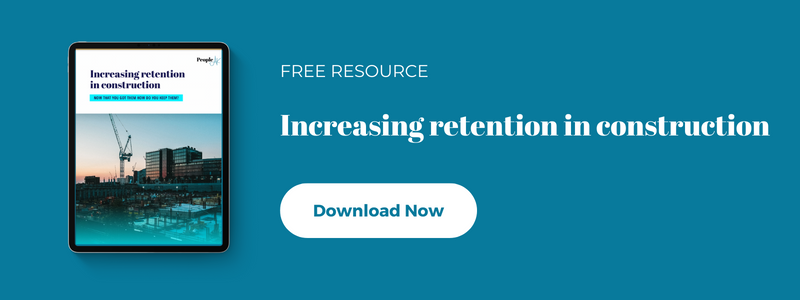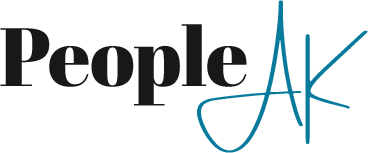With skilled worker and trade shortages plaguing the construction industry, attracting new talent is a top concern of many firms; however, hiring a new worker is only the first step. Without a smooth construction onboarding process, you’ll risk losing these new hires before they can contribute their expertise to your business.
When implemented properly, your onboarding can make new employees feel welcome and keep them with your business for the long term. Here’s a construction onboarding checklist to help you do it right.
Share and Collect Necessary Paperwork
While not the most exciting stage of hiring a new employee, your first step will always be to collect and share a plethora of paperwork. This includes federal and state paperwork (I-9s, W-4s, and state tax withholding forms), as well as employee identification documents.
Additionally, your business will want to collect and share the following proprietary documents:
- Offer letters
- Direct deposit forms
- Employment agreements
- Employee benefits declaration forms
- Employee handbooks
- Non-disclosure agreements (NDAs)
- Non-compete agreements
- New hire questionnaires
- Union agreements
While you can manually manage paperwork, the most effective way to handle this portion of onboarding is through HR software. These programs not only allow employees to easily fill out all necessary forms, but they will also make it easy to review or change documents later.
Set Up Everything They Need
In terms of other administrative tasks, you’ll also want to provide new team members with all the information and tools needed to start working. This includes giving them a tour of your building and the worksite, showing them where to find equipment and resources, and setting up any necessary software and accounts. During this stage, you’ll also set up benefits and insurance.
Additionally, if team members have a computer or workstation, you should make sure that it’s clean and in working order. This helps new employees feel welcome.
Discuss Goals and Expectations
With every new team member, you’ll want to verbally reiterate information such as start dates, hours, schedules, pay, and benefits. While this information was likely included in the job offer letter, clarifying it helps ensure everyone is on the same page.
You’ll also want to discuss goals, both in terms of performance expectations as well as the career goals of new hires. By discussing career goals off the bat, you can more effectively figure out how team members can grow their careers within your organization.
Prioritize Safety Training
In the construction industry, safety onboarding is a crucial component. Employees should always feel safe at work, and claims can cause a strain on your budget.
New-hire construction workers are more likely to experience work-related injuries. One 2020 study found that claims filed for new-hire construction workers cost Colorado businesses nearly 40 million dollars. Before a new team member starts working, you should make sure that they are up to date on all relevant safety training.
While these trainings will vary based on the role, they might include:
- How to recognize hazards on the job site
- How to control or eliminate hazards
- Emergency preparedness
- Hazard communication
- Personal protective equipment usage
Welcome Them to the Community
When onboarding a new construction employee, be sure to introduce them to the rest of your team. Some firms will welcome new team members with a small party or a team lunch. Whatever you choose to do, making them feel welcome helps build a sense of community and team synergy with colleagues.
As part of your introductions, make sure the new employee knows any decision-makers or members of your leadership team. This lets them know who to go to when they have questions.
Introduce Current Projects
In most cases, new team members will be brought on in the middle of projects. As such, you should develop a process that informs new hires of the scope, goals, and next steps of these projects. From here, you can work with new hires to determine how they can fit into these projects and begin contributing.
It’s also helpful to share what other worksites are focusing on, too. Even if the new hire won’t be directly involved with another team’s project, keeping them in the loop on other wins and projects helps build a sense of community and company pride – even when worksites are hundreds of miles apart.
Schedule Regular Check-Ins
Even after the initial onboarding phase, you’ll want to schedule regular check-ins with new hires. This allows you to address any issues they’ve encountered, as well as ensure that they have the appropriate equipment and training for their role.
Your first check-in should happen around the 30-day mark, after which time you should check in with new hires at 90-day, 6-month, and 1-year intervals. During this time, try to collect feedback that can help you improve your workplace, as well as provide better service on the worksite.
Perfect Your Construction Onboarding Process
While onboarding is a crucial step in employee retention, it doesn’t always happen naturally in the construction business. To help make sure that your firm has onboarding practices that support your employment needs, you can lean on the help of experts.
People AK not only specializes in recruitment, but we can also provide business consulting that can help your business thrive. Whether it’s developing a best-in-class onboarding process, engaging your employees, or building cohesion within your organization, reach out today to learn how we can help you build and refine teams that deliver exceptional results.


